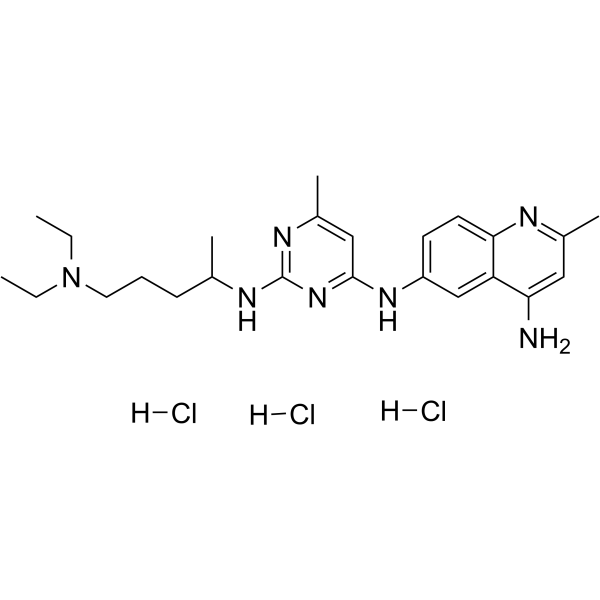Home
Products
NSC 23766



| Product Name | NSC 23766 |
| Price: | Inquiry |
| Catalog No.: | CN00475 |
| CAS No.: | 1177865-17-6 |
| Molecular Formula: | C24H35N7.3HCl |
| Molecular Weight: | 530.96 g/mol |
| Purity: | >=98% |
| Type of Compound: | Alkaloids |
| Physical Desc.: | Powder |
| Source: | |
| Solvent: | Chloroform, Dichloromethane, Ethyl Acetate, DMSO, Acetone, etc. |
| SMILES: | CCN(CCCC(Nc1nc(Nc2ccc3c(c2)c(N)cc(n3)C)cc(n1)C)C)CC |
| Contact us | |
|---|---|
| First Name: | |
| Last Name: | |
| E-mail: | |
| Question: | |
| Description | NSC 23766 trihydrochloride is an inhibitor of Rac1 activation. |
| In Vitro | NSC 23766 (100 μM) treatment effectively inhibits polar body emission in a dose-dependent manner. NSC 23766 (200 μM) increases the percentage of morphologically abnormal spindles of oocytes. In NSC 23766-treated oocytes, the p-MAPK protein expression is significantly decreased[2]. NSC23766 (50 μM) plus 100 ng/mL Jagged1, GDF9 and BMP15, reduces the number of germLine cell cysts and increases the number of primordial follicles[3]. NSC23766 significantly inhibits GTP-Rac1 activity and phosphorylation of Rac1-PAK, ERKs and p38 MAPK in the spinal dorsal horn neurons[4]. |
| In Vivo | NSC23766 (2.5 mg/kg/day, i.p.) significantly attenuates the onset of spontaneous diabetes in NOD mice, without significant effects on the growth (body weights) of the mice. NSC23766 significantly increases the expression of Rac1 and CHOP, a marker for ER-stress, in islets from NOD mice[1]. |
| Animal Admin | Balb/c control and NOD mice are at 7 weeks of age and are divided into four groups (n=8/group). At 8 weeks of age two groups of experimental animals (Balb/c and NOD) receive NSC23766 (2.5 mg/kg/day, i.p./daily) and other two groups, which serve as control Balb/c and NOD mice and receive equal volume of saline. The body weights and blood glucose are monitored every week for 34 weeks. |
| Density | 1.2±0.1 g/cm3 |
| Boiling Point | 632.4±65.0 °C at 760 mmHg |
| Flash Point | 336.2±34.3 °C |
| PSA | 91.99000 |
| LogP | 3.86 |
| Vapour Pressure | 0.0±1.9 mmHg at 25°C |
| Storage condition | ?20°C |